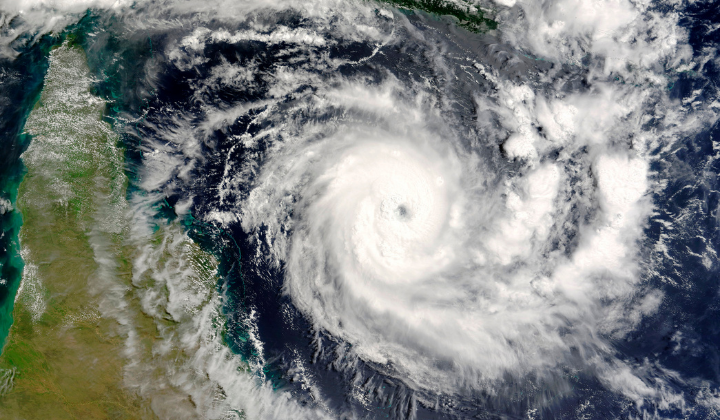
– Manuscript –
A new study suggests that severe storms are likely to start affecting wider areas that include cities like New York, Boston, Beijing and Tokyo.
An international research team predicts that big atmospheric storms called tropical cyclones could move further to the north or south. It said this is because of the effects of planet-warming climate change.
The U.S. National Oceanic and Atmospheric Administration describes tropical cyclones as “organized systems of clouds and thunderstorms” that develop over bodies of water.
Major tropical cyclones are declared either hurricanes or typhoons, depending on where the storms happen. In the North Atlantic, central North Pacific and eastern North Pacific, the term hurricane is used. In the Northwest Pacific, the storms are called typhoons.
The researchers suggest that hurricanes and typhoons could start appearing farther north in the northern half of the world and farther south in the southern half of the world. Those areas contain larger population centers that traditionally are not struck by large hurricanes or typhoons.
Joshua Studholme is a physicist at Yale University’s Department of Earth and Planetary Sciences. He was the lead writer of the study, which recently appeared in Nature Geoscience.
Studholme said in a statement the study “represents an important, under-estimated risk of climate change.”
“This research predicts that the 21st century’s tropical cyclones will likely occur over a wider range of latitudes than has been the case on Earth for the last 3 million years,” he added.
The researchers note that tropical cyclones form close to the equator in warm, tropical oceans. This usually happens away from the intense effects of the jet streams – strong wind paths that circle the planet.
But the study suggests that warming climates on Earth will create smaller temperature differences between the equator and the poles. In the summer months this could cause the jet stream to weaken or split. If this were to happen, it could open “a window in the mid-latitudes for tropical cyclones to form and intensify,” the researchers said.
The team reached the findings by examining computer models of warm climates from Earth’s distant past. They also used satellite observation and a range of weather and climate estimates.
The researchers said their models estimated that, during periods with warmer climates, tropical cyclones formed and intensified at higher latitudes. These periods of warm weather include the Eocene, which was 56 to 34 million years ago, and Pliocene, 5.3 to 2.6 million years ago.
Alexey Fedorov is a professor of oceanic and atmospheric sciences at Yale. He was a co-writer of the study. He said in a statement that there are still “large uncertainties” about how tropical cyclones will change in the future.
However, he added that “multiple lines of evidence” suggest more tropical cyclones are likely to happen in mid-latitudes, “even if the total frequency of tropical cyclones does not increase.”
One leader of the research was Kerry Emanuel, a climate specialist at the Massachusetts Institute of Technology. Another recent study led by Emanuel suggests that the North Atlantic experienced an increase in hurricanes over the last century.
That study, published last month in Nature Communications, used historical records to build computer models to create climate conditions for the last 150 years.
Emanuel said he added hurricane “seeds” – conditions that could produce a storm – throughout the models to see how many would lead to storms. The results showed that the number of “intense” Atlantic storms would become more frequent as world temperatures rose.
Words in This Story
hurricane – n. a violent storm with very strong winds; a powerful ocean storm with wind speeds measured at 119 kilometers an hour or above
typhoon – n. a powerful storm with very strong winds (similar to a hurricane)
occur – v. to happen; to take place
range –n. a group or collection of things that share some similarity
latitude – n. the distance of a place north or south of the equator
poles – n. parts of the Earth that are furthest north and south
uncertain – adj. not sure or not able to decide about something
frequent – adj. happening often
*This article has been edited and reprinted from VOA Learning English with permission from Voice of America (VOA) for use in English language materials.
